Writing emails might be considered a forgotten art by people in general but most businesses from the B2B and B2C industries still consider it as one of the most powerful marketing tactics to engage with their end audience and to drive sales and business growth.
An email is the first step towards building an (hopefully) everlasting relationship with a prospect or a happy customer/client. It may seem overrated and you may feel that people don't read emails anymore, but such is not the case.
Email is expected to reach 90.9% of those who are online in 2019 and we are already in 2017! This shows that emails are going to penetrate the world in a much more expansive way than imagined despite the digital noise that social media has managed to create in the last 7-10 years!
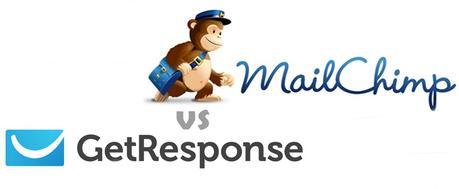
Moreover, emails are considered the most effective channel for generating the highest ROI for marketers across B2B and B2C industries. But if you are not using the right email marketing software, then there's a high chance of your emails getting lost in the inbox of your subscribers or target audience.
And even if your target audience does read your email but doesn't give you a response on it, then it is again a sign for a complete email marketing overhaul! Writing email content is different and has its own importance but marketing it in the right way at the right time just cannot be ignored.
Are you a business owner who has been neglecting your email marketing efforts for a considerably long period of time? If the answer is "yes", now is the time to get back on track. Let us discuss and draw a comparison between the two most popular email software existing in the market:
MailChimp
This email software was founded by Ben Chestnut and Dan Kurzius in 2001. It has a customer base of over 12 million who send more than a billion emails in one single day. It's the perfect tool for marketing professionals who have just entered the world of email marketing and want to experiment with functionalities such as drag-and-drop editor.
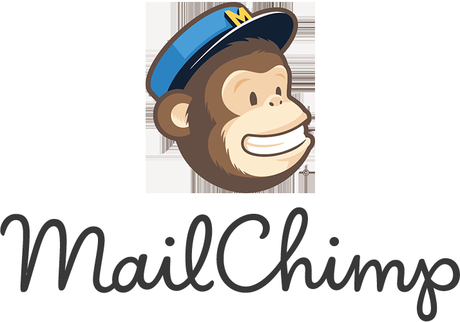
If you decide to use the tool to generate awareness for your brand, you will realize that it is a hot favorite amongst many eCommerce companies and online stores that are looking to sell their products at a much faster pace. The tagline of MailChimp is "everyone starts small, but with the right resources." And that is what this tool is all about.
MailChimp Pros - GetResponse vs MailChimp
1. Easy sign up processAnyone can create a free account for an unlimited period of time on MailChimp. No credit card details are required at this stage. All you need is an email ID; create your username and you are go to go! The whole process is a no-brainer.
2. Clean interfaceOnce you arrive at the Dashboard after logging in, you will find a list of actions which are self-explanatory. You can create a campaign, upload a list of contacts, invite your colleagues, etc. Navigation is simple and it wouldn't take you much time to master the "here's and how's" of the tool.
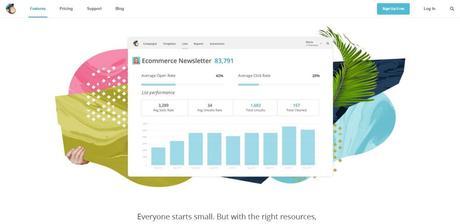 3. Campaign types
3. Campaign types You can create four types of campaigns on MailChimp. Please note that the campaigns are quite basic in nature. They are:
- Regular campaign - where you can design and customize the template and content. This is the most commonly used option.
- Plain text campaign - which is, as the name suggests, allows the user to send plain text emails. Again - very simple but since MailChimp offers a template for every industry and purpose, plain text campaigns don't appeal much.
- A/B testing campaign - well, this has answered your query, isn't it? MailChimp does have this common functionality!
- RSS campaign - where you can combine the content from your RSS feed with MailChimp templates.
 4. A/B testing
4. A/B testing This feature is such a common component of email marketing that it is almost impossible to imagine a software not having split tests! In MailChimp, you can create a variety of split tests - on the basis of subject lines, "from name", content and send time. Have a look:
- Subject line: you can choose up to 3 subject lines that you would like to test in your campaign.
- From name: you can choose up to 3 from names you would like to test. It can be a person's name, your brand name or your registered company's name.
- Content: you can create three different kinds of email texts to test which one is more engaging - this is quite obvious!
- Send time: you can choose up to 3 days of the week or 3 times a day you would like to test.
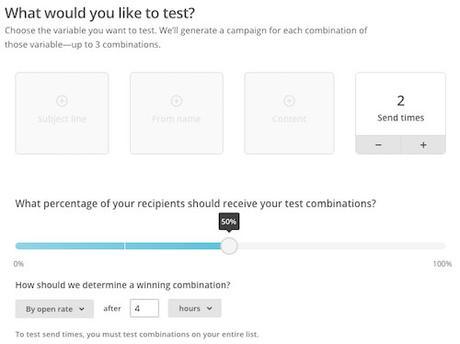
MailChimp offers a variety of flexible options to ensure the best results from the split tests. After all, none of your marketing efforts or valuable time should go waste, right?
5. Sending messagesThe whole process is quite simple. All you have to do is either choose from a plethora of email templates offered to you or code your own. A quick fix is to drag-and-drop elements and play with colours to come up with an engaging email - both in terms of design and content.
You can schedule the email or use a paid feature called "Timewarp" which will ensure your subscribers receive your email at the decided time (eg. 10am) but in their time zones. This means a subscriber from the US will receive the email at 10am, just like his or her fellow subscriber in India.
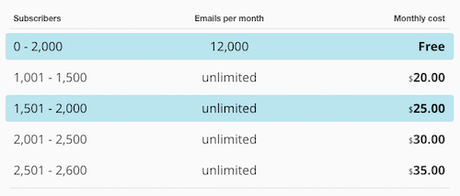
MailChimp can also calculate the best time to send emails for better results and to save your email from getting lost under the pile of other emails in the subscriber's inbox. Unfortunately, that's again a paid feature!
6. Built-in formsYes, you can create built-in forms. It's quite simple thanks to the drag-and-drop feature that dominates the tool. Moreover, having built-in forms within the email text makes it easier for the reader to just sign up or fill in his or her details. 7. Contact management
The free version allows you to add up to 2000 unique contacts. You can create as many lists as you want. You can even create multiple groups depending upon the interests and preferences of subscribers. You can also create segments on the tool called "segment" which is a collection of subscribers that is based on shared qualities, like engagement activity and group choices.
A fantastic feature of MailChimp is that you can add subscribers from sign up forms on the web, Facebook page, etc. So this email marketing software not only helps in engaging customers but also acquiring new ones from anywhere on the internet rather easily.
8. Automation - the most important featureCreating automated emails is again a paid feature on MailChimp but it is a rather interesting one. Just like in other marketing software, it is possible to create workflows here in MailChimp. You can easily create a targeted series of emails that get triggered by your subscriber's activity or on a specific date or event.
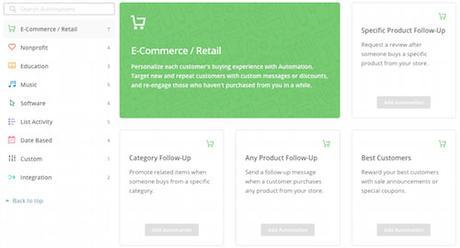
It comes in handy to connect with consumers who have abandoned their shopping carts and need to be reminded of the products lying unattended. It is also possible to create a series of customary emails to introduce the products or the online store.
9. Integration In this area, MailChimp is the undefeated champ. It is a leader and no other software comes close to this. MailChimp can be integrated with a variety of tools such as WordPress, Eventbrite, Salesforce, Facebook, Freshbooks, Hootsuite, Flickr, Joomla, Google Analytics, and more. As you can see - it reaches out to a variety of brands belonging to different backgrounds.
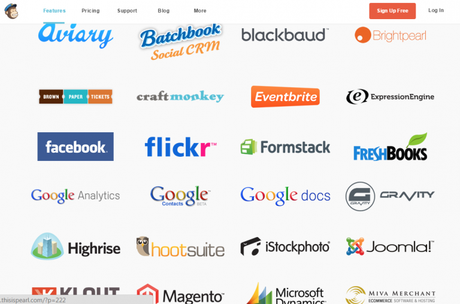
10. API MailChimp has a very complex yet flexible API documentation. It allows you to quickly and it quickly adapt your email marketing to fit the workflow that you have created without breaking any sweat. Moreover, this feature enables you to create visual workflows in the email marketing software.
MailChimp Cons - GetResponse vs MailChimp
1. Can't send multiple listsEven though you can create various different lists, you can't send the same email to more than one list at a time. If you want to be able to do that, then you will have to clone the campaign and use the other list. Due to this, the whole process becomes tedious and takes longer than usual.
2. Limited clienteleMailChimp is a wonderful tool and as far as its reach goes, everyone wants to use it first especially when they are new to the world of email marketing. A lot of eCommerce stores use MailChimp and they have been able to use this email marketing software to its full potential. However, you will notice that the tool hasn't really grabbed the attention of other industries, most particularly B2B.
Now the reasons for the same can be many because both B2B and B2C industries seem to apply the email marketing tactic to ultimately drive business growth. If it suits your kind of business, then MailChimp is apt for you; otherwise it's best to choose something that can satiate all your email marketing needs.
3. No visual automationOne drawback about the automation feature is that you can't create visual workflows, like other tools such as GetResponse where you can see which response will trigger when. For an extensive tool like MailChimp, having a visual workflow is a little too overwhelming. Moreover, it's like playing a gamble.
First, you can't access the automation feature in the paid version and when you can, you can't create visual workflows - which is a downer, no doubt - and restricts your flexibility in terms of marketing automation.
4. Support systemIf you are using the trial version, then you will not get any kind of support. This is the biggest drawback of using MailChimp.
5. PricingAs mentioned earlier, MailChimp is perhaps the only email marketing software that allows the user to use the free version for an unlimited period of time. But in this version, you can only add up to 2000 contacts and send not more than 12,000 emails.
The next option is of a "prepay" where in the user can pay first and then make use of the features - both free and paid - of MailChimp. This is perfect for those brands and individuals who don't need to send emails on a daily basis or so frequently.
The last option is to pay on the monthly basis wherein the user will receive all the features and support. You can have a look at the various packages here:
Also, did you know that there are no discounts at MailChimp and you have to pay the full price? That's where it lacks.
GetResponse
This tool boasts of being the " world's easiest email marketing platform ". Launched in 1997 by Simon Grabowski, GetResponse has been in the market way before MailChimp stepped in. It currently serves 3,50,000 customers across 182 countries. The tool is available in 21 different languages.
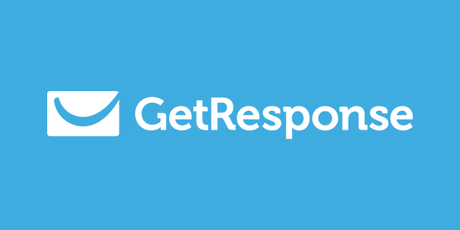
GetResponse offers top-notch quality marketing solutions to business owners to help them grow their businesses. The tool is user-friendly and the types and quality of features it offers are apt for all kinds of businesses - irrespective of size, industry or customer base.
If one has to properly define GetResponse: it is an email and online campaign management platform that has been specifically designed to support growing businesses. If you are looking to grow your business rapidly but with a proper marketing plan, then GetResponse will surely interest you.
There is a lot to do in GetResponse: you can build targeted subscriber lists, send impactful daily/weekly/monthly newsletters, circulate video emails (because visuals are the next big thing!) and even do follow-up or drip email campaigns.
It is obvious when you are searching for the right email marketing software, your biggest concern is that your emails should reach the target audience's inbox and not land in the Junk box. However, you can be assured this doesn't happen with GetResponse as it takes pride in being a spam-free solution that conveniently achieves an email deliverability rate of 99%! This makes all marketers across industries breathe a sigh of relief!
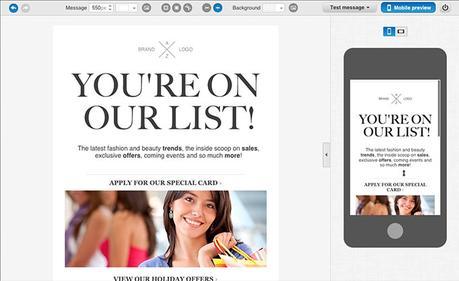
Unlike MailChimp, the helpdesk at GetResponse ( read a detail review of GetResponse review ) is available at your disposal on chat 24/7. This option makes it even better! So if you still feel that - yes - GetResponse will help you boost your sales and maximize your business' ROI, then do scan through its pros and cons.
GetResponse Pros - GetResponse vs MailChimp
1. Email design typesYou will not believe the number of options GetResponse offers in terms of designs and templates. You can choose from over 500+ pre-designed templates and 1000 free iStock images. It doesn't matter which industry you belong to or what the actual purpose of all your email marketing efforts is, GetResponse will keep you covered.
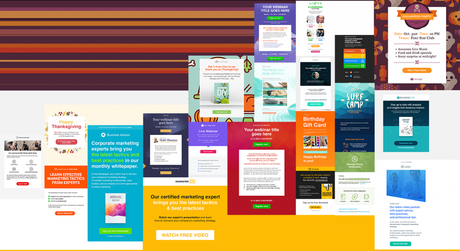
From sports and travel to retail and health to eCommerce and media - there are way too many template options to choose from. You can pick any one of them that suits your brand's image and voice.
Just like MailChimp, this tool also has drag-and-drop and HTML code editors. So if you want to use any of the templates and add your own elements, you can do that too. Otherwise a coder in your team can easily create an email for you from scratch.
2. ResponsivenessHow would you feel if you are unable to read an email on your mobile phone or tablet? Irritated, right? You have to understand - with the advent of so many devices, people are not necessarily going to check their emails on the desktop.
They are going to read emails on the phone or tablet too. So if your template is not responsive, you are going to lose out on a large group of potential clients or customers. So to engage them, the first step is to make sure your template is responsive.
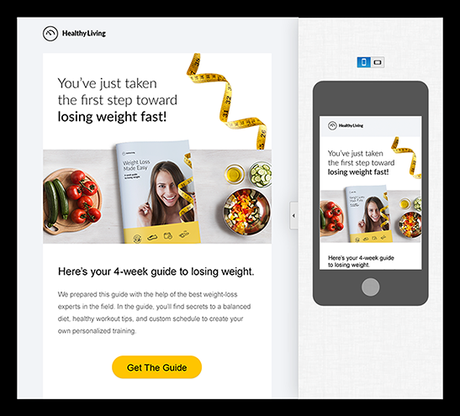
Thankfully, GetResponse has an in-built feature - a mobile email preview - that will allow you to see how your emails look on a phone from the dashboard itself. It's free of cost and is a great feature if your studies show most of your subscribers open emails while on-the-go.
3. Advanced segmentationSee - no two customers are alike. They are bound to respond to the same email in a different way. In this time and age, engaging them with personalized communication has become quite important. Every business has to tailor their emails to serve the right people and if that doesn't happen, those people won't choose to communicate with your brand in the future.
Thanks to GetResponse, segmenting similar clients or customers has never been easier! With the help of this tool, it is easy to create multiple campaigns for multiple groups of people. You can use different images and CTAs to spread the information to the right set of people.
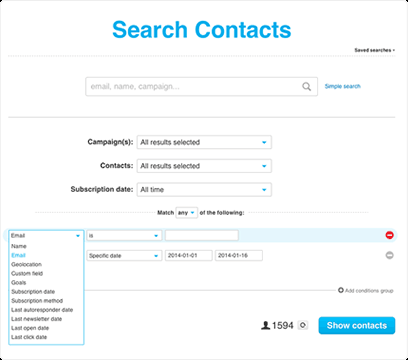
You can even send emails demographically. You can also generate unique promotional codes to boost conversions because receiving a response on your emails is also important! So yes - as the name suggests, GetResponse offers a very advanced form of advanced segmentation and this feature will help you drive business growth.
4. A/B testingHonestly speaking, it is quite simple to create a split test on GetResponse as this feature is integrated into the Settings section by default. You can A/B test an email campaign with up to 50% of the subscribers with the help of a handy slider. The whole process is quite simple and hardly takes a couple of minutes to set up.
5. Email marketing automationUnlike MailChimp, you can create a visual flowchart of your automated emails quite easily. It makes executing drip email campaigns a fun activity. All you need to do is create a flowchart of responses you want to email to your subscribers - responses that are triggered at a specific date, event or due to an action.
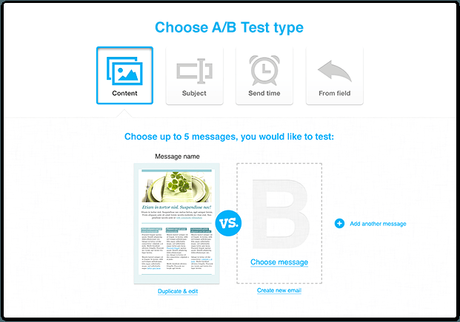
In GetResponse, you can create hundreds of scenarios and keep a response ready for every action of the subscriber. eCommerce businesses can make good use of this feature, especially to re-engage people who have abandoned their shopping carts. Want to know more about marketing automation?
6. Email deliverability rateJust sending emails to the right set of people is not enough. It is also important to make sure your emails are reaching their inbox and not the spam folder. GetResponse has taken this into account and hence, has set up an anti-spam support team that monitors all accounts on the tool and even sends warnings to them if it senses a suspicious activity.
7. Perfectly-timed delivery of emailsHow is that possible? GetResponse offers a life-changing feature that allows the tool to predict the most optimal delivery hour in a day to send emails. With this feature, you can be assured of the fact that your emails will always land at the top of the subscriber's inbox!
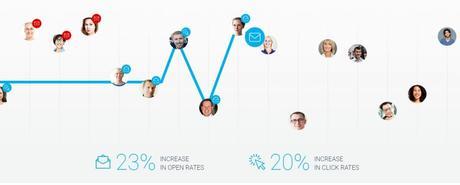
GetResponse selects a time slot in which the subscriber is most likely to read emails. The prediction is made with the use of old behavioural data of the subscribers. This feature will boost your click-through rates.
8. Advanced analyticsGetResponse also offers real-time tracking analytics. This feature will allow you to see when your subscribers receive, open, and click your messages and from which location. You won't have to wait for a day or a couple of hours to see how your emails fared amongst your subscribers.
It also tracks a range of metrics such as open click rate, subscriber's activity patterns, device used to open and read your emails, social data (such as likes, shares, comments, RTs, etc.), and many more. You can also locate your subscribers across the globe using the feature called "Global View" - all in real-time which is a big thing!
9. IntegrationGetResponse integrates with a variety of CRM and CMS systems along with social tools. Some of them are Amazon Payments, Salesforce, Bing Ads, Evernote, Eventbrite, Facebook, Slack, Vine, Member Mouse, VWO, ClickDesk, Zendesk and Freshbooks.
10. Landing pagesIf you are looking to create high-converting emails, then GetResponse can make that happen for you rather easily. You can design a landing page from scratch by choosing from a pool of 1,000 iStock photos. The feature has the drag-and-drop option which makes it easy to create a page quickly.
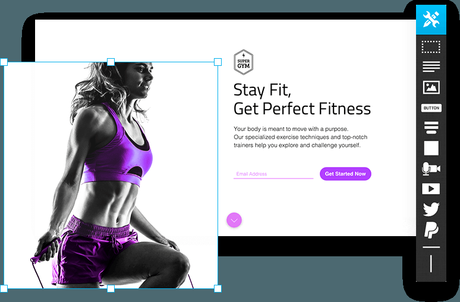
You can also choose any GetResponse subdomain for free and access flexible publishing options. Just like emails, you can conduct split tests on your landing page just to compare which web design did better.
11. Webinar solutionsWebinars are in! Almost every B2B business is venturing into webinar marketing because it has made it easier to engage with the target audience. Using GetResponse, you can create a webinar, customize the URL, use advanced date-and-time picker and schedule it accordingly.
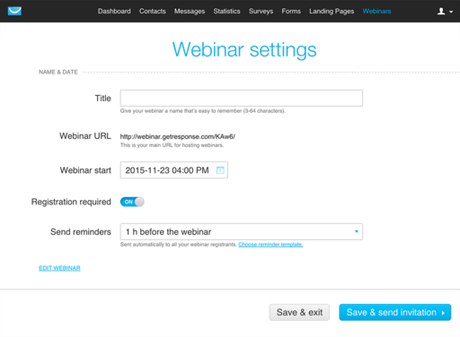
You also have the option to choose to keep the webinar private or open for all. As far as security is concerned, the webinar is secured with SSL-encrypted URLs. Since this involves videos, it is important to construct a secured online environment.
GetResponse Cons - GetResponse vs MailChimp
1. Default campaignEven though the signup process looks easy on GetResponse, it is not so. The tool automatically creates a default campaign, which is actually a list, as soon as you sign up. It uses those details that you inserted while signing up, but those details might not necessarily reflect your preferences.
The worst part is that you can't change any of the information. You will have to create a new campaign with the right preferences and then make that your default campaign. The whole process gets a bit tedious for the users.
2. User interfaceNavigating through the software can be a little confusing for the first couple of weeks, and a lot has got to do with the terminology used. For example: A list is called a campaign. A subscriber is called a contact. Once you get a hang of it, you are fine but you have to grasp everything quickly.
Moreover, once you start using the different features of the tool, you will realize there is no natural flow to how the various elements stack up on the web page. The navigation is a downer.
3. PricingThe best thing about GetResponse is that you can use it for free for 30 days without giving any credit card details! Once the trial period is over, you can choose from any one of the four options available on the website.
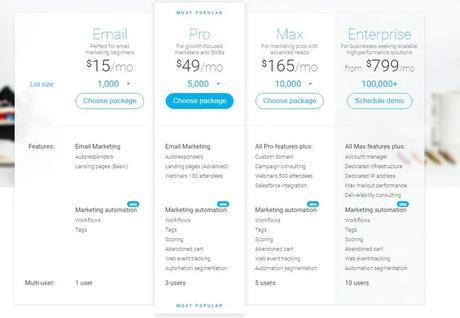
The only thing you have to keep in mind is that there are additional charges for Salesforce integration, landing pages and webinar solutions. So make sure you include all of that in your package and then pay the total amount.
Who takes the cake? GetResponse does
You have the comparison right in front of your eyes. MailChimp is more apt for eCommerce companies and online stores. It is a user-friendly tool but it doesn't specifically appeal to people who want more of information and less of colours and cool CTAs, etc.
GetResponse, on the other hand, has advanced (and handy features) such as landing pages, webinar solutions, real-time tracking analytics, and many more. That is why it is ideal for B2B businesses. It is a standalone tool which is more appealing to B2B marketers.
Take the trial package of both the software and you will agree that GetResponse has a lot to offer in terms of email functionalities, analytics and other supporting marketing solutions.
This is what happened with 35-year-old Michael Davies who runs his own Saas-based think tank. Although he loved using MailChimp thanks to its friendly interface, the emails created somehow didn't fit well amongst the target audience who found the templates to be too "casual" even though the content wasn't.
Moreover, MailChimp limited their chance of conducting webinars or setting up new landing pages - which turned out to be extra costs to be borne by his company. But after switching to GetResponse, Davies can confidently state that the tool literally "gets" the business and offers everything on one single platform - which is one less headache for him.
While GetResponse seems to be the clear winner here, there are some more options like SendinBlue, GetDrip, MailerLite, WebEngage, AutoPilotHQ and more that you can explore. After all, it is all about finding the right fit for your business!
